Yuhan Dong
Bayesian Beamforming for Integrated Sensing and Communication Systems
Feb 10, 2025Abstract:The uncertainty of the sensing target brings great challenge to the beamforming design of the integrated sensing and communication (ISAC) system. To address this issue, we model the scattering coefficient and azimuth angle of the target as random variables and introduce a novel metric, expected detection probability (EPd), to quantify the average detection performance from a Bayesian perspective. Furthermore, we design a Bayesian beamforming scheme to optimize the expected detection probability under the limited power budget and communication performance constraints. A successive convex approximation and semidefinite relaxation-based (SCA-SDR) algorithm is developed for the complicated non-convex optimization problem corresponding to the beamforming scheme. Simulation results show that the proposed scheme outperforms other benchmarks and exhibits robust detection performance when parameters of the target are unknown and random.
MR-COGraphs: Communication-efficient Multi-Robot Open-vocabulary Mapping System via 3D Scene Graphs
Dec 24, 2024Abstract:Collaborative perception in unknown environments is crucial for multi-robot systems. With the emergence of foundation models, robots can now not only perceive geometric information but also achieve open-vocabulary scene understanding. However, existing map representations that support open-vocabulary queries often involve large data volumes, which becomes a bottleneck for multi-robot transmission in communication-limited environments. To address this challenge, we develop a method to construct a graph-structured 3D representation called COGraph, where nodes represent objects with semantic features and edges capture their spatial relationships. Before transmission, a data-driven feature encoder is applied to compress the feature dimensions of the COGraph. Upon receiving COGraphs from other robots, the semantic features of each node are recovered using a decoder. We also propose a feature-based approach for place recognition and translation estimation, enabling the merging of local COGraphs into a unified global map. We validate our framework using simulation environments built on Isaac Sim and real-world datasets. The results demonstrate that, compared to transmitting semantic point clouds and 512-dimensional COGraphs, our framework can reduce the data volume by two orders of magnitude, without compromising mapping and query performance. For more details, please visit our website at https://github.com/efc-robot/MR-COGraphs.
Joint Beamforming for Multi-target Detection and Multi-user Communication in ISAC Systems
Nov 01, 2024Abstract:Detecting weak targets is one of the main challenges for integrated sensing and communication (ISAC) systems. Sensing and communication suffer from a performance trade-off in ISAC systems. As the communication demand increases, sensing ability, especially weak target detection performance, will inevitably reduce. Traditional approaches fail to address this issue. In this paper, we develop a joint beamforming scheme and formulate it as a max-min problem to maximize the detection probability of the weakest target under the constraint of the signal-to-interference-plus-noise ratio (SINR) of multi-user communication. An alternating optimization (AO) algorithm is developed for solving the complicated non-convex problem to obtain the joint beamformer. The proposed scheme can direct the transmit energy toward the multiple targets properly to ensure robust multi-target detection performance. Numerical results show that the proposed beamforming scheme can effectively increase the detection probability of the weakest target compared to baseline approaches while ensuring communication performance.
Joint Beamforming for Backscatter Integrated Sensing and Communication
Sep 04, 2024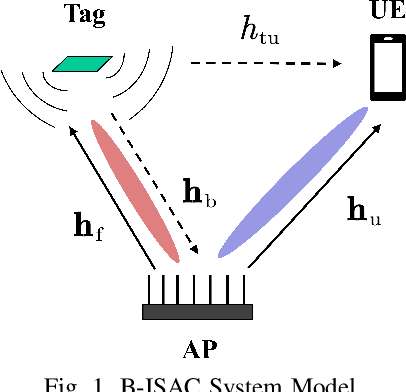
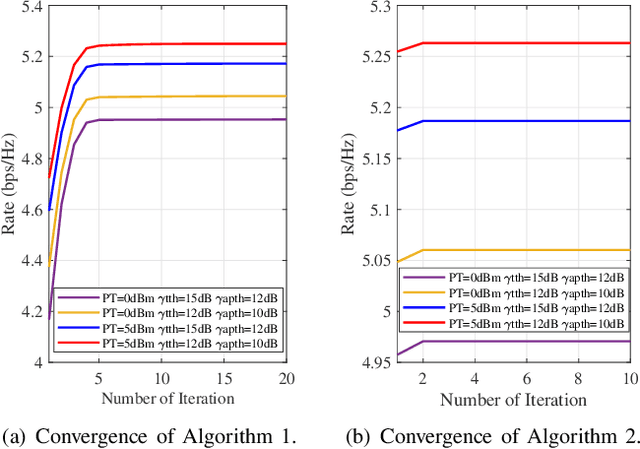
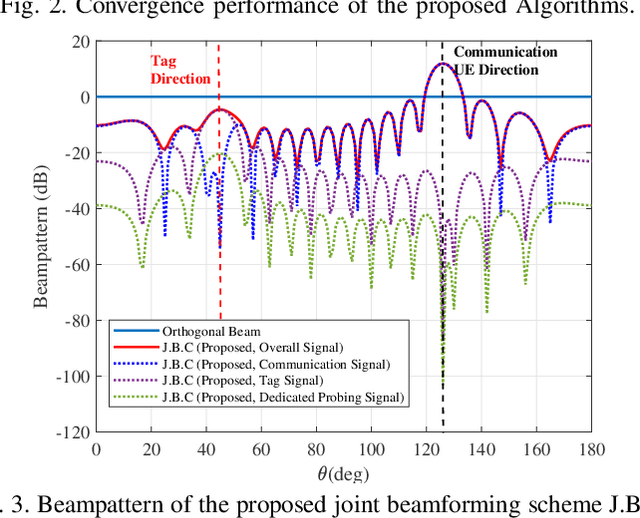
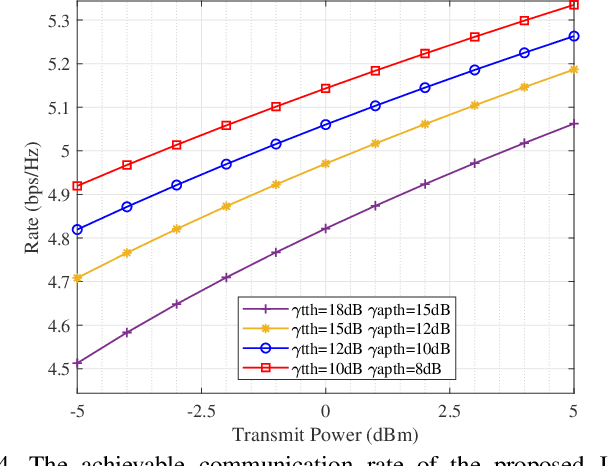
Abstract:Integrated sensing and communication (ISAC) is a key technology of next generation wireless communication. Backscatter communication (BackCom) plays an important role for internet of things (IoT). Then the integration of ISAC with BackCom technology enables low-power data transmission while enhancing the system sensing ability, which is expected to provide a potentially revolutionary solution for IoT applications. In this paper, we propose a novel backscatter-ISAC (B-ISAC) system and focus on the joint beamforming design for the system. We formulate the communication and sensing model of the B-ISAC system and derive the metrics of communication and sensing performance respectively, i.e., communication rate and detection probability. We propose a joint beamforming scheme aiming to optimize the communication rate under sensing constraint and power budget. A successive convex approximation (SCA) based algorithm and an iterative algorithm are developed for solving the complicated non-convex optimization problem. Numerical results validate the effectiveness of the proposed scheme and associated algorithms. The proposed B-ISAC system has broad application prospect in IoT scenarios.
Misaligned Over-The-Air Computation of Multi-Sensor Data with Wiener-Denoiser Network
Sep 01, 2024Abstract:In data driven deep learning, distributed sensing and joint computing bring heavy load for computing and communication. To face the challenge, over-the-air computation (OAC) has been proposed for multi-sensor data aggregation, which enables the server to receive a desired function of massive sensing data during communication. However, the strict synchronization and accurate channel estimation constraints in OAC are hard to be satisfied in practice, leading to time and channel-gain misalignment. The paper formulates the misalignment problem as a non-blind image deblurring problem. At the receiver side, we first use the Wiener filter to deblur, followed by a U-Net network designed for further denoising. Our method is capable to exploit the inherent correlations in the signal data via learning, thus outperforms traditional methods in term of accuracy. Our code is available at https://github.com/auto-Dog/MOAC_deep
B-ISAC: Backscatter Integrated Sensing and Communication for 6G IoE Applications
Jul 27, 2024Abstract:The integration of backscatter communication (BackCom) technology with integrated sensing and communication (ISAC) technology not only enhances the system sensing performance, but also enables low-power information transmission. This is expected to provide a new paradigm for communication and sensing in internet of everything (IoE) applications. Existing works only consider sensing rate and detection performance, while none consider the estimation performance. The design of the system in different task modes also needs to be further studied. In this paper, we propose a novel system called backscatter-ISAC (B-ISAC) and design a joint beamforming framework for different stages (task modes). We derive communication performance metrics of the system in terms of the signal-to-interference-plus-noise ratio (SINR) and communication rate, and derive sensing performance metrics of the system in terms of probability of detection, estimation error of linear least squares (LS) estimation, and the estimation error of linear minimum mean square error (LMMSE) estimation. The proposed joint beamforming framework consists of three stages: tag detection, tag estimation, and communication enhancement. We develop corresponding joint beamforming schemes aimed at enhancing the performance objectives of their respective stages by solving complex non-convex optimization problems. Extensive simulation results demonstrate the effectiveness of the proposed joint beamforming schemes. The proposed B-ISAC system has broad application prospect in sixth generation (6G) IoE scenarios.
A Survey on Efficient Inference for Large Language Models
Apr 22, 2024Abstract:Large Language Models (LLMs) have attracted extensive attention due to their remarkable performance across various tasks. However, the substantial computational and memory requirements of LLM inference pose challenges for deployment in resource-constrained scenarios. Efforts within the field have been directed towards developing techniques aimed at enhancing the efficiency of LLM inference. This paper presents a comprehensive survey of the existing literature on efficient LLM inference. We start by analyzing the primary causes of the inefficient LLM inference, i.e., the large model size, the quadratic-complexity attention operation, and the auto-regressive decoding approach. Then, we introduce a comprehensive taxonomy that organizes the current literature into data-level, model-level, and system-level optimization. Moreover, the paper includes comparative experiments on representative methods within critical sub-fields to provide quantitative insights. Last but not least, we provide some knowledge summary and discuss future research directions.
FlashDecoding++: Faster Large Language Model Inference on GPUs
Nov 10, 2023



Abstract:As the Large Language Model (LLM) becomes increasingly important in various domains. However, the following challenges still remain unsolved in accelerating LLM inference: (1) Synchronized partial softmax update. The softmax operation requires a synchronized update operation among each partial softmax result, leading to ~20% overheads for the attention computation in LLMs. (2) Under-utilized computation of flat GEMM. The shape of matrices performing GEMM in LLM inference is flat, leading to under-utilized computation and >50% performance loss after padding zeros in previous designs. (3) Performance loss due to static dataflow. Kernel performance in LLM depends on varied input data features, hardware configurations, etc. A single and static dataflow may lead to a 50.25% performance loss for GEMMs of different shapes in LLM inference. We present FlashDecoding++, a fast LLM inference engine supporting mainstream LLMs and hardware back-ends. To tackle the above challenges, FlashDecoding++ creatively proposes: (1) Asynchronized softmax with unified max value. FlashDecoding++ introduces a unified max value technique for different partial softmax computations to avoid synchronization. (2) Flat GEMM optimization with double buffering. FlashDecoding++ points out that flat GEMMs with different shapes face varied bottlenecks. Then, techniques like double buffering are introduced. (3) Heuristic dataflow with hardware resource adaptation. FlashDecoding++ heuristically optimizes dataflow using different hardware resource considering input dynamics. Due to the versatility of optimizations in FlashDecoding++, FlashDecoding++ can achieve up to 4.86x and 2.18x speedup on both NVIDIA and AMD GPUs compared to Hugging Face implementations. FlashDecoding++ also achieves an average speedup of 1.37x compared to state-of-the-art LLM inference engines on mainstream LLMs.
Wi-Fi 8: Embracing the Millimeter-Wave Era
Sep 28, 2023
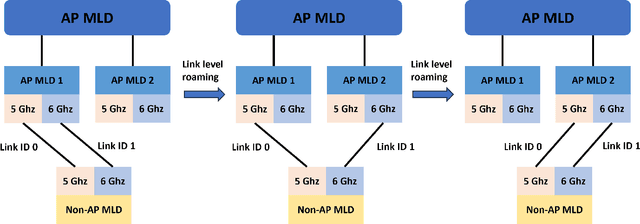

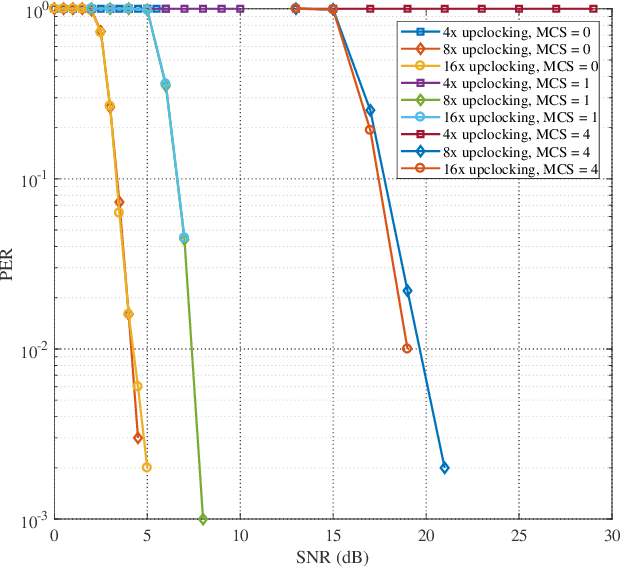
Abstract:With the increasing demands in communication, Wi-Fi technology is advancing towards its next generation. Building on the foundation of Wi-Fi 7, millimeter-wave technology is anticipated to converge with Wi-Fi 8 in the near future. In this paper, we look into the millimeter-wave technology and other potential feasible features, providing a comprehensive perspective on the future of Wi-Fi 8. Our simulation results demonstrate that significant performance gains can be achieved, even in the presence of hardware impairments.
IEEE 802.11be Wi-Fi 7: Feature Summary and Performance Evaluation
Sep 27, 2023



Abstract:While the pace of commercial scale application of Wi-Fi 6 accelerates, the IEEE 802.11 Working Group is about to complete the development of a new amendment standard IEEE 802.11be -- Extremely High Throughput (EHT), also known as Wi-Fi 7, which can be used to meet the demand for the throughput of 4K/8K videos up to tens of Gbps and low-latency video applications such as virtual reality (VR) and augmented reality (AR). Wi-Fi 7 not only scales Wi-Fi 6 with doubled bandwidth, but also supports real-time applications, which brings revolutionary changes to Wi-Fi. In this article, we start by introducing the main objectives and timeline of Wi-Fi 7 and then list the latest key techniques which promote the performance improvement of Wi-Fi 7. Finally, we validate the most critical objectives of Wi-Fi 7 -- the potential up to 30 Gbps throughput and lower latency. System-level simulation results suggest that by combining the new techniques, Wi-Fi 7 achieves 30 Gbps throughput and lower latency than Wi-Fi 6.
 Add to Chrome
Add to Chrome Add to Firefox
Add to Firefox Add to Edge
Add to Edge